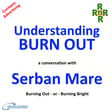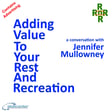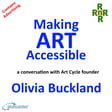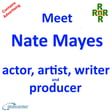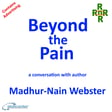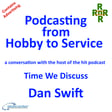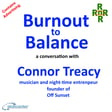
The Fabric Arts – a conversation with Sarazen Anyin
Fibre art is any fine art that uses natural or synthetic fibre, fabric or yarn to create an item that can be displayed, used or worn.
There are says Sarazen Anyin more than fifty different fibre arts from sewing to Nålebinding.
In this episode of podcast Rest and Recreation, Sarazen describes her introduction to fibre arts with embroidery, and how that initial interest became a passion and then a career.
Michael and Sarazen explore the history of fibre arts and the evolution of the technical size of the craft.
Inspired? Sarazen explains the easy way to get started with fibre arts and how to explore the different aspects of fibre arts.
Rest and Recreation is made on Zencastr.
Zencastr is the all-in-one podcasting platform, that really does make creating content so easy.
If you would like to try podcasting using Zencastr visit zencastr.com/pricing and use our offer code ABECEDER.
Travel
Each country, region, and culture, has its own approach to fabric and clothing. If you wanted to travel the world exploring fabric cultures the best way to make your travel arrangements is by joining The Ultimate Travel Club, because that is where you will get trade prices on flights, hotels, and package holidays.
Use offer code ABEC79 to receive a discount on your membership fee.
You can find out more about both Michael Millward, and Sarazen Anyin at Abeceder.co.uk .
Proactive Positive Ageing.
Sarazen and Michael discuss the health and well-being benefits of fibre arts, how the rhythmic motion of the art form can help with psychological well-being.
When it comes to health it’s a good idea to know the risks early so that you can take appropriate actions to maintain good health, so we recommend The Annual Health Test from York Test which covers 39 different health markers.
Access York Test and use this discount code ABECEDER2.
Matchmaker.fm
Thank you to the team at Matchmaker.fm introducing me to Sarazen Matchmaker.fm is where matches of great hosts and great guests are made. Use our offer code MILW10 for a discount on membership.
Three the network
Wave goodbye to buffering by listening on the UK’s Fastest 5G Network with Unlimited Data, Three.
Visit Three for information about telecom solutions from Three, and the special offers available when you quote my referral code WPFNUQHU.
If you have liked this episode of Rest and Recreation, please give it a like and download it so that you can listen any time anywhere.
To make sure you do not miss future editions please subscribe.
Being a Guest
If you would like to be a guest on Rest and Recreation, please contact us using the link at Abeceder.co.uk.
We recommend that potential guests take one of the podcasting guest training programmes available from Work Place Learning Centre.
Remember, the aim of all the podcasts produced by Abeceder is not to tell you what to think, but we do hope to make you think!
Thank you to you for listening.

